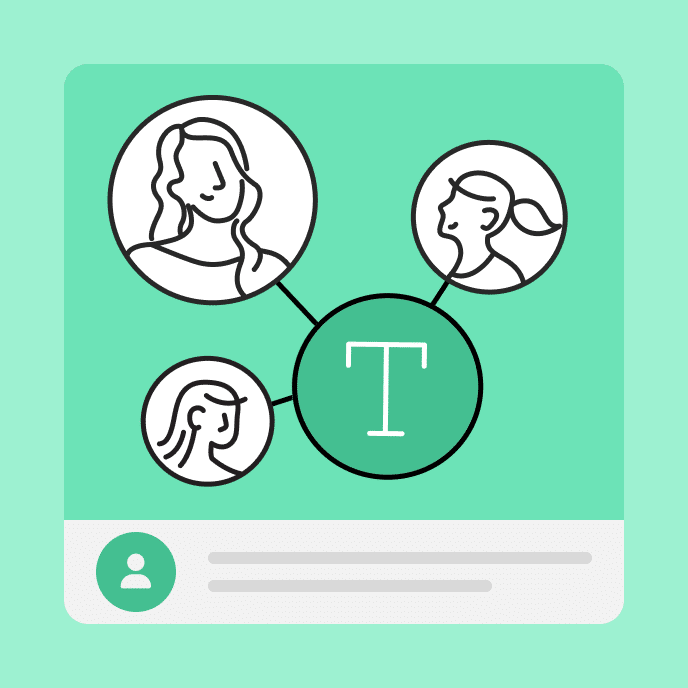What Is Blended Learning? A Comprehensive Guide
Learn what blended learning is, how it combines in-person and online content to provide a flexible approach to learning, and real-world examples to follow.

The best of traditional and modern methods with blended learning
I don’t often go for coffee, but when my spouse offers to stop at Starbucks on her way home, I request a blended frappuccino, and here’s why. Blended drinks offer the best of traditional and modern techniques, combining the deep, rich coffee flavor of an Italian espresso and the cool, smooth texture you’d expect from a burger joint shake.
Similarly, blended learning combines the best of traditional and modern teaching methods. Used in higher education, workplace training, and adult education programs, the blended approach has gained more and more traction as new technologies are introduced and learners require more flexibility.
So, what is blended learning, and why has it become part of every successful learning and development department’s training strategy? In this post, we’ll cover exactly what blended learning is, its benefits, the different types and their use cases, and best practices to follow for an effective blended approach.
Key Takeaways
- Blended learning combines in-person and online learning methods, using the best of both modern and traditional techniques to boost learner engagement.
- Blended learning can take many forms, including the flex model, which prioritizes self-directed learners, and the flipped model, which has learners engage virtually before meeting in-person.
- Choosing the right blended learning model requires careful planning. Define your learning objectives, run a needs analysis, know your audience, and leverage the best tools available.
What is blended learning?
Blended learning is an educational method that combines online or remote learning with in-person learning. This combination of learning experiences provides both learners and instructional designers with a variety of methods and mediums to explore and distribute content.
Blended learning is often confused with hybrid learning and vice versa. The difference between the two comes down to how learners are grouped. In hybrid learning, there are two separate groups of learners—one online and one in-person—and learning takes place simultaneously. In blended learning, there is one group of learners who participate both online and in-person, and learning takes place asynchronously.
Benefits of blended learning
The benefits of blended learning are many, including:
- Flexible access. Content is available 24/7, meaning learners can study when and where they choose. Optional face-to-face learning is offered to facilitate deeper understanding when needed.
- Self-paced learning. Learners can progress through content at their own pace. This means they can choose what to study in-depth, skip familiar content, and reach out for additional help as needed.
- Multimodal approach. A variety of learning styles and preferences are covered by combining face-to-face and interactive virtual methods, increasing retention and engagement.
- Increased engagement. Interactive learning activities both in-person and online boost learner participation. Social learning is encouraged through collaborative online discussion boards and in-person group projects, fostering a strong community.
- Real-time feedback. While face-to-face time can be used for extra help and support, virtual quizzes and assessments provide instant feedback. Analytics and performance tracking, if enabled, can personalize learning pathways by providing additional content as needed.
- Cost and time efficiency. Costs for in-person training—venue rental, trainer time, travel time, and printed materials—is reduced. Online materials are easily updated and re-used, increasing training return on investment (ROI).
Now that we’ve properly defined blended learning and explored its benefits, let’s take a closer look at the many types of blended learning models that can be used for effective training.

Types of blended learning models
Combining face-to-face instruction with digital instruction methods, each type of blended learning model features unique ways to deliver flexible, effective learning. There’s no one right way to go about it, but the model you choose should largely depend on the content being delivered and the flexibility of your learners.
Rotation model
As its name suggests, the rotation model has learners cycle through a variety of learning formats. Learners may start the week by completing online modules, move to in-person group projects in the middle of the week, and finish the week with one-on-one virtual coaching sessions to offer additional support and feedback. The order in which learning formats are cycled can be customized to fit the schedule of both learners and instructors.
In the workplace, the rotation model might be used during a comprehensive onboarding program. New hires may have a whole week of face-to-face instruction, either virtually or in-person, and then move to shorter online modules the next week as they actually begin working in their daily role.
Flex model
Also referred to as the self-directed model, the flex model is a learner-centered approach, giving the learner complete control over how and when they access content. Virtual learning is the primary form of learning in a flex model, with instructors available for individual coaching or group sessions, but only as requested by learners.
In the workplace, a flex model might be used when an organization distributes a new product training course for their sales team. Reps are encouraged to move through the virtual modules on their own schedule, while the training team is available for in-person or virtual sessions as needed.
Enriched virtual model
The enriched virtual model is similar to the flex model, with one exception. Learning is primarily conducted online—and at the learner’s pace—but there are periodically scheduled in-person collaborative and coaching sessions to deepen understanding and foster a team mentality.
In the workplace, an enriched virtual model is perfect for remote teams that can primarily operate online, but occasionally want or need to meet in person. Meeting in-person quarterly, annually, or even weekly for locally remote teams provides employees with the perfect combination of flexibility and collaboration.
Face-to-face driver model
Essentially the enriched virtual model reversed, face-to-face driver models prioritize in-person instruction, with online materials serving as a supplement to learning. Very similar to most higher ed and secondary education models, learners attend traditional classroom sessions and work through online modules to reinforce learning outside the classroom.
In the workplace, a face-to-face driver model might be implemented during a company-wide workplace safety training initiative. During the day, employees might attend in-person training on hazardous materials or equipment safety procedures while afternoons are set aside for completing assessments and reflection modules online.
Flipped model
The flipped learning model has learners first engage with online content before attending in-person sessions. Ideal for self-motivated learners, the flipped model emphasizes critical thinking and active learning, relying on interactive, engaging virtual content to guide initial learning. In-person sessions are then used for discussion, practical application, and any further guidance as needed.
In the workplace, a flipped model might be implemented during a company-wide soft skills training retreat. Each morning, employees could be assigned online modules on a particular topic like communication, adaptability, or teamwork. In the afternoons, they would then attend in-person meetings with their team to discuss what they learned, how it can be incorporated into their daily workflow, and to clarify any lingering questions. Virtual work could also take place in the evenings followed by in-person discussions the next day.
Examples of blended learning in action
Blended learning can apply to a wide range of educational settings, including both the workplace and higher education. Let’s take a look at a few specific examples within each area, and then discuss the tools necessary for effective blended learning.
Corporate training scenarios
Corporate training uses for blended learning are only limited by an L&D department’s budget and their learner’s availability. Here are three examples of corporate training scenarios, accompanied by the type of blended learning model best suited for maximum impact.
- Customer service training: Using the rotation model, new call center agents are first assigned training modules that focus on providing an excellent customer experience, handling difficult customer conversations, and soliciting feedback from customers. They then move to in-person collaborative training discussing what they learned, gaining different perspectives as they go. Finally, they spend time with their mentor, role-playing through different scenarios and receiving feedback.
- Compliance training: Using the flex model, employees are informed of a new spot-the-phishing-scam microlearning course. They can complete it on their own time and at their own pace, and are encouraged to bring any further questions to the training team as needed.
- Soft skills training: Using the flipped model, an organization’s L&D department assigns employees a growth mindset course, complete with a sorting quiz and digital flashcards. The next day, employees are put into teams to discuss what they learned, find practical applications for developing a growth mindset, and share their experiences.
Higher education use cases
Like in corporate training, the blended learning model in higher education can take many different forms. Fully online universities follow a flex or self-directed model with certain aspects of the enriched virtual model in the case of scheduled instructor sessions.
Most modern university experiences follow the face-to-face driver model, with classes being primarily in person and digital learning as a supplement. Still, others may follow a rotation model like science courses that have lab rotations mixed in with group learning and individual mentoring. Graduate courses may follow the flipped model where students are primarily working through course material on their own with scheduled discussions and practical application.
Tools and platforms used
To get the most out of a blended learning model, you’ll need the right tools. A learning management system (LMS) is key for both managing and distributing course material as well as tracking learner progress. An LMS ensures that foundational content is available at all times for self-directed learners to access, and scheduled courses are distributed on time to any device.
Course authoring tools offer instructional designers an intuitive way to create engaging course material, whether it’s meant for in-person or online learning. From developing fully interactive and highly customizable courses to fast, responsive courses designed for any device, a robust course creation tool can help you design immersive learning experiences for every learner.
Best practices for implementing blended learning
To implement an effective blended learning model as part of your organization’s L&D department, follow these steps:
1. Define clear goals and objectives
Begin by defining clear and measurable goals for your learners and align them to organizational goals. Consider using the SMART goal method to ensure goals are specific, measurable, achievable, relevant, and time-bound. Doing so clarifies the purpose of , especially important for adult learners.
2. Analyze learner needs
You’ll need to know your audience’s existing skills, learning preferences, and environmental constraints. This will determine which blended learning model to use, depending on where your learners are located, any accessibility issues they might have, and their schedule. To gather this information, complete a full training needs analysis.
3. Choose the right blend based on outcomes
Use your goals to help you choose the right blended learning model to use. Just because you have a state-of-the-art, fully immersive VR training kit doesn’t mean it’s the best option for your learners. Are you designing for a sales team that’s mostly on-the-go and needs content to be readily available and mobile? Go with a flex model. Teaching workplace safety to an in-house team? Go ahead and use the face-to-face driver model.
4. Use a variety of content formats
The beauty of blended learning is that it combines the best of both modern and traditional teaching and learning methods. Be sure to mix in live discussions, group activities, virtual quizzes, bite-sized microlearning courses, short videos, recorded webinars, scenario-based learning, and more. Every interactive and engaging learning model is at your fingertips.
5. Connect in-person and virtual content
Instead of imagining throwing all of your content into a food processor and randomly choosing different models, consider how each session moves naturally into the next. Does the virtual work done last night inform the in-person discussion schedule for this morning? Does the virtual discussion board blend naturally into the in-person group activity? Make sure the material—and the blend model—has a natural progression.
6. Utilize analytics and tracking tools
A robust LMS, such as Articulate’s Reach, allows for frictionless content distribution and provides detailed learner analytics. Use this data to track learner progress, identify knowledge or skills gaps for further training, and provide regular feedback.
Final thoughts
Blended learning combines the flexibility, scalability, and personalization of online learning with the engagement, collaboration, and support of in-person learning. Choosing the right blended model depends on your learner’s needs, preferences, and expected outcomes. Remember to define clear learning objectives, use a variety of engaging content formats, and make good use of analytics tools to provide the best blended learning experience.
Choosing the right tools for the job can make all the difference. Check out how a top community college’s use of e-learning enhanced their blended learning model, boosting student engagement, streamlining feedback, and reducing costs.
Ready to get started now? Start a free trial of the Articulate 360 platform today and gain access to the course authoring, distribution, and tracking tools you need to provide a seamless blended learning experience.


